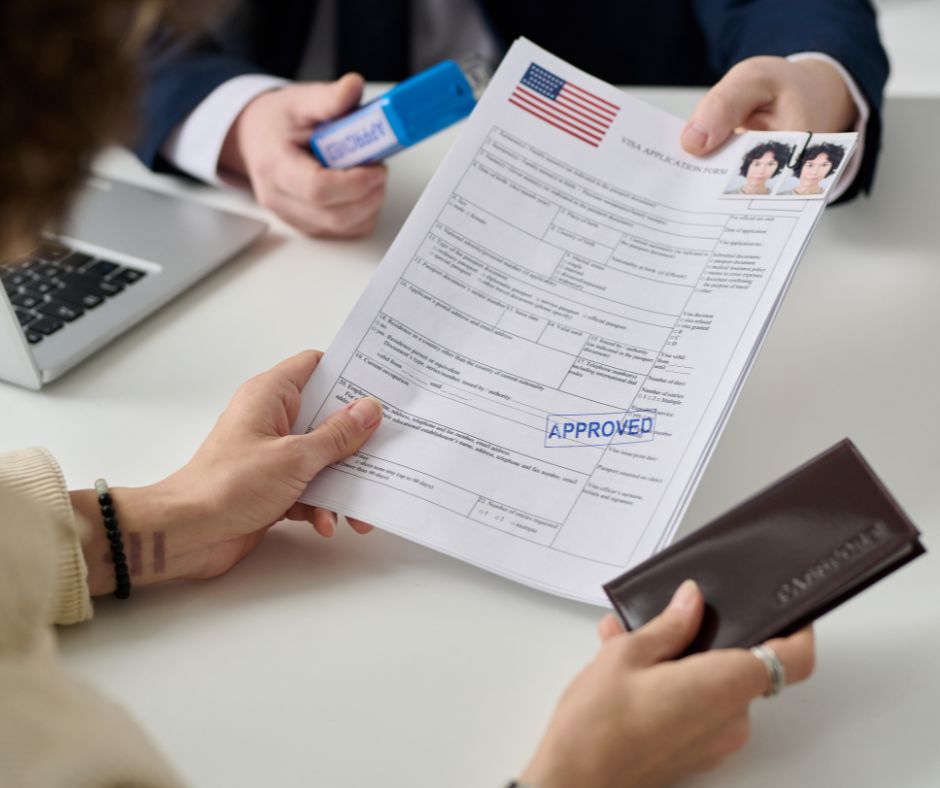
Most people know noncitizens can get green cards and eventually citizenship through marriage. However, far fewer people know how to get a green card in the USA without marriage and how to get US citizenship without marriage.
Many wonder, “Do you have to be married to get a green card?” Thankfully, the answer is no. You can also get a green card through other family relationships, employment, humanitarian programs, or the diversity visa lottery.
Finding a path to a green card is more complex than many imagine. For help exploring your options and applying for a green card that is not based on marriage, reach out to EMP Law. Our experienced Charlotte and Winston-Salem immigration lawyers can help you weave through the complex maze of US immigration law.
Give us a call at (336) 724-2828 or send an online message today to get started.
How Can You Get a Green Card Without Marriage?
Knowing how to get a green card without marriage begins with understanding how to qualify for a green card. Usually, you work through United States Citizenship and Immigration Services (USCIS), but you may work with another agency.
You can get a green card if you meet one of several eligibility categories and are not ineligible for any reason.
These eligibility categories include:
- Family,
- Employment,
- Humanitarian programs, and
- The Diversity Visa Lottery.
Each category offers ways to get a green card in the USA without marriage.
Family-Based Green Cards
If you are related to an LPR or US citizen, they may be able to sponsor you for a green card. Family-based green cards fall into two basic categories: immediate relative (IR) and family preference (F) visas.
Immediate Relative Visas
Many IR visas are marriage-based. However, US citizens can also sponsor their parents and children in some circumstances. For a child to sponsor a parent, the child must be 21 or older. For a parent to sponsor a child, the child must be unmarried and under 21.
Family Preference Visas
There are five family-based eligibility categories, divided between four preference levels:
- First preference—unmarried children of US citizens who are 21 or older (F1);
- Second preference—unmarried children under 21 and spouses of LPRs (F2A);
- Second preference—unmarried children 21 or older of LPRs (F2B);
- Third preference—married children of US citizens (F3); and
- Fourth preference—siblings of US citizens if the US citizen is 21 or older (F4).
These categories are subject to yearly issuance limitations where unused visas in one category are reallocated.
Violence Against Women Act Visas
You may sponsor yourself for a Violence Against Women Act (VAWA) visa if your potential US citizen or LPR sponsor has subjected you to battery or extreme cruelty. The US citizen or LPR may be your spouse, parent, or child.
Employment-Based Green Cards
Employment-based green cards are also divided into five preference categories:
- First preference (EB-1)—workers with extraordinary ability, certain multinational managers and executives, and outstanding professors and researchers;
- Second preference (EB-2)—workers holding advanced degrees or having exceptional ability;
- Third preference (EB-3)—skilled workers, professionals, and other workers;
- Fourth preference (EB-4)—Special Immigrants; and
- Fifth preference (EB-5)—immigrant investors.
Most jobs fall into the EB-1, EB-2, or EB-3 categories. EB-4 visas span a handful of specific situations, some unrelated to employment.
Humanitarian-Based Green Cards
There are several ways to qualify for a humanitarian-based green card, including:
- Asylum,
- Refugee status,
- Special Immigrant Juvenile Status (SIJS),
- S criminal informant visas,
- T human trafficking victim visas, and
- U crime victim visas.
SIJS and S-visas fall under the EB-4 visa umbrella. Refugee status is typically limited to a ceiling set each year. Other humanitarian programs are less numerically limited.
The Diversity Visa Lottery
Each year, the US selects 50,000 noncitizens to receive diversity lottery visas. You must apply with the State Department in a narrow window and come from a country less historically represented in US immigration.
Determining You Qualify for a Green Card
To begin your application, you request a determination that you qualify for a green card. Usually, this means submitting a visa petition with USCIS. However, your first step may not be with USCIS in some cases.
Non-USCIS Steps
EB-2 and EB-3 visas requiring an employer sponsor typically require the employer to request labor certification from the DOL before submitting an immigrant visa petition to USCIS. To apply for refugee status, you work with the United States Refugee Admissions Program (USRAP). And, if you are in removal proceedings, you first apply for asylum through immigration court.
Visa Petition
You or your sponsor may need to submit one of the following forms to USCIS, along with supporting evidence:
- Form I-130, Petition for Alien Relative (family-based);
- Form I-140, Immigrant Petition for Alien Workers (EB-1, EB-2, and EB-3);
- Form I-360, Petition for Amerasian, Widow(er), or Special Immigrant (VAWA and EB-4);
- Form I-526, Immigrant Petition by Standalone Investor or Form I-526E, Immigrant Petition by Regional Center Investor (EB-5);
- Form I-589, Application for Asylum and for Withholding of Removal (asylum);
- Form I-854, Interagency Alien Witness and Informant Record (S-visa);
- Form I-914, Application for T Nonimmigrant Status (T-visa); or
- Form I-918, Petition for U Nonimmigrant Status (U-visa).
Once they receive it, the USCIS evaluates your application to decide whether you qualify for a green card.
Applying for a Green Card in the USA
Outside the US, you apply for a green card through consular processing with the State Department. Inside the US, you apply to adjust your status through USCIS.
Consular Processing
If abroad, you apply by submitting Form DS-260, Immigrant Visa Electronic Application, to the nearest US Consulate or Embassy and working with the consulate. If the consulate concludes you qualify, it issues you a visa and authorizes you to travel to the US.
Adjustment of Status
If in the US, you apply for a green card by submitting Form I-485, Application to Register Permanent Residence or Adjust Status to USCIS. Then USCIS verifies whether or not you qualify. If you do qualify, they will issue the card.
Visa Availability
An immigrant visa must be available before the US government issues a green card. US immigration law limits how many family and employment-preference visas the US can issue each year by category, region, and country. Several categories, regions, and countries require a significant waiting period before a visa becomes available.
To determine whether a visa is available, you consult the visa bulletin. You will need your priority date, which should be on your visa petition receipt notice from USCIS.
The bulletin uses two charts: “Dates for Filing” and “Final Action Dates.” The Final Action Dates Chart reports the priority dates of green cards just issued, while the Dates for Filing Chart reports the priority dates the State Department is now processing.
If you are going through consular processing, you can submit your DS-260 once your priority date comes up on the Dates for Filing Chart. For adjustment of status, consult USCIS’s monthly announcement to determine which chart to use to know when to submit your I-485.
Feeling Overwhelmed? Let an Immigration Lawyer Guide Your Green Card Application
There are many non-marriage-based ways to qualify for a green card. To speak with an experienced, dedicated immigration lawyer about your green card eligibility or get help applying, contact us online or call (336) 724-2828 today.



